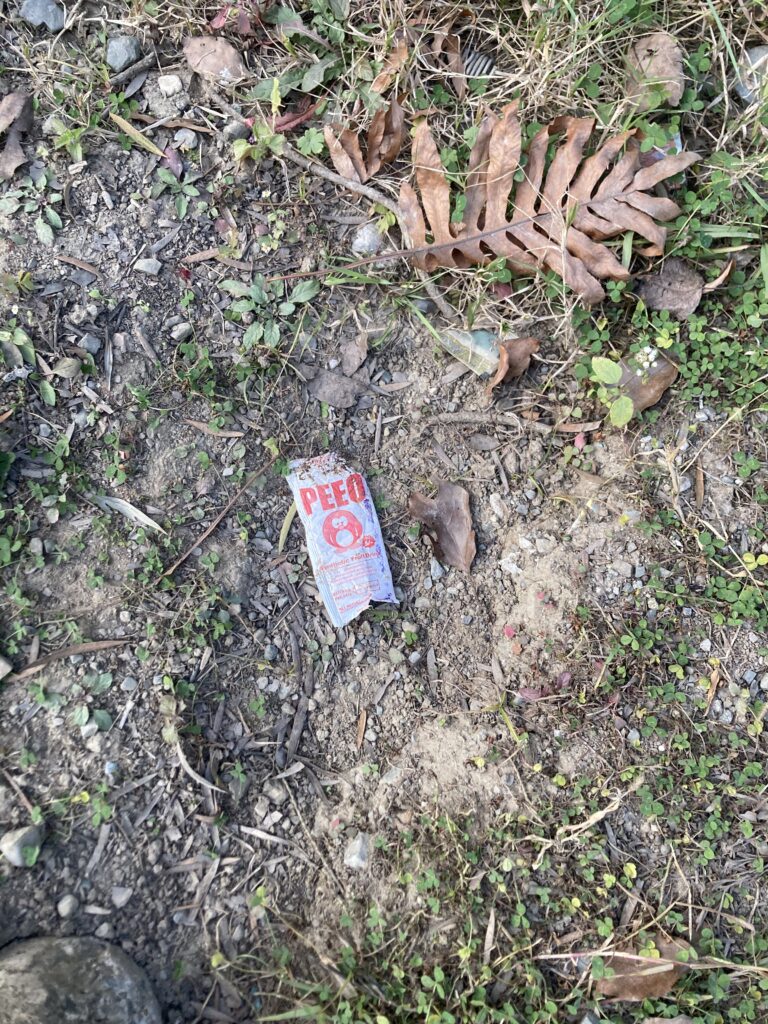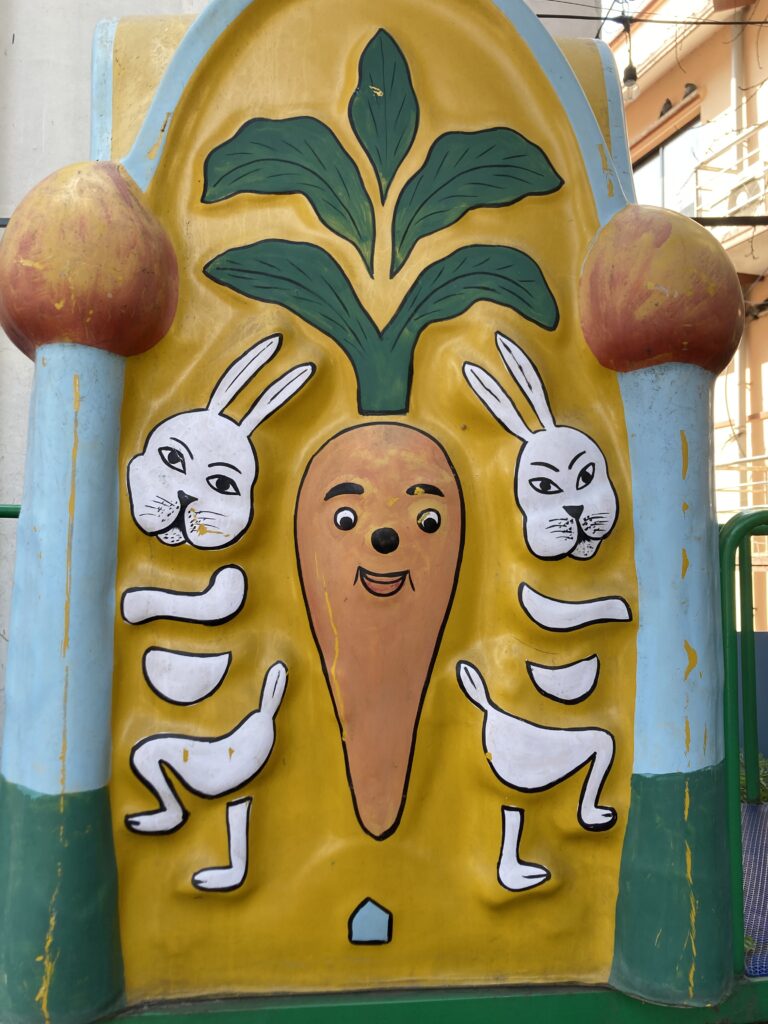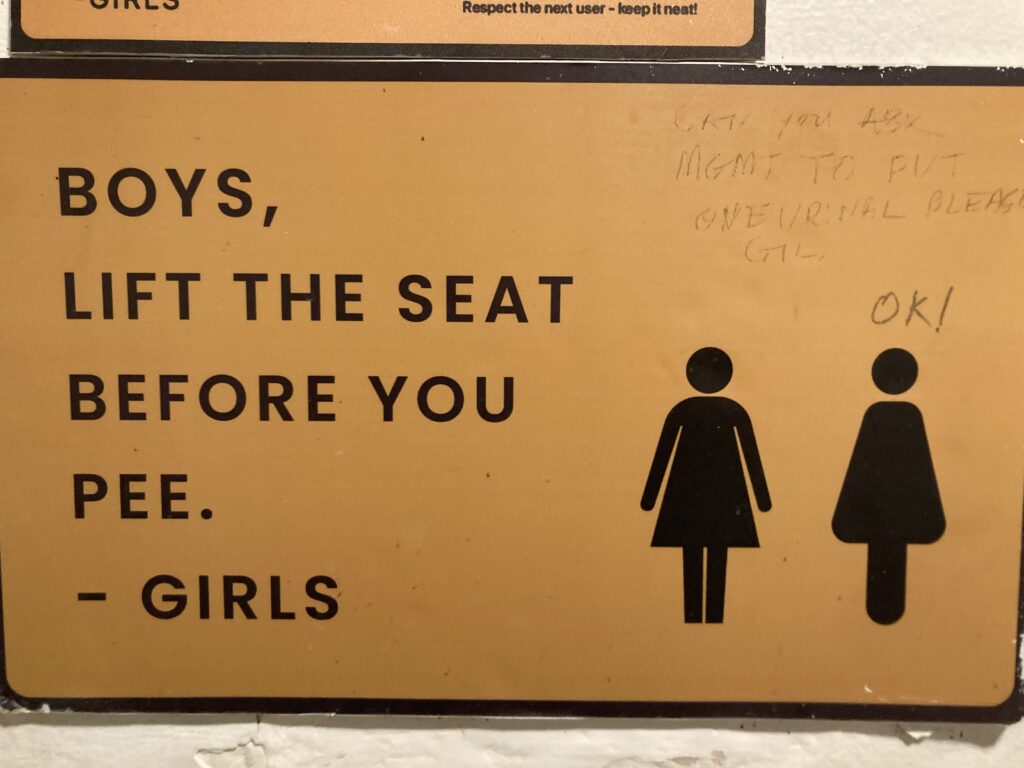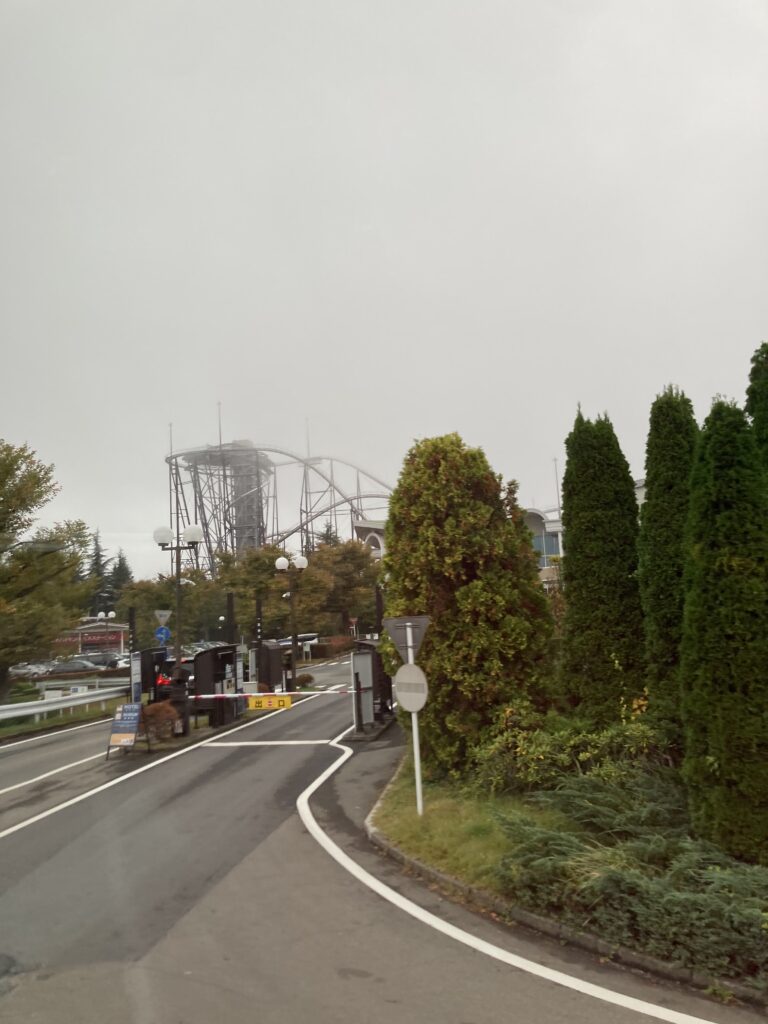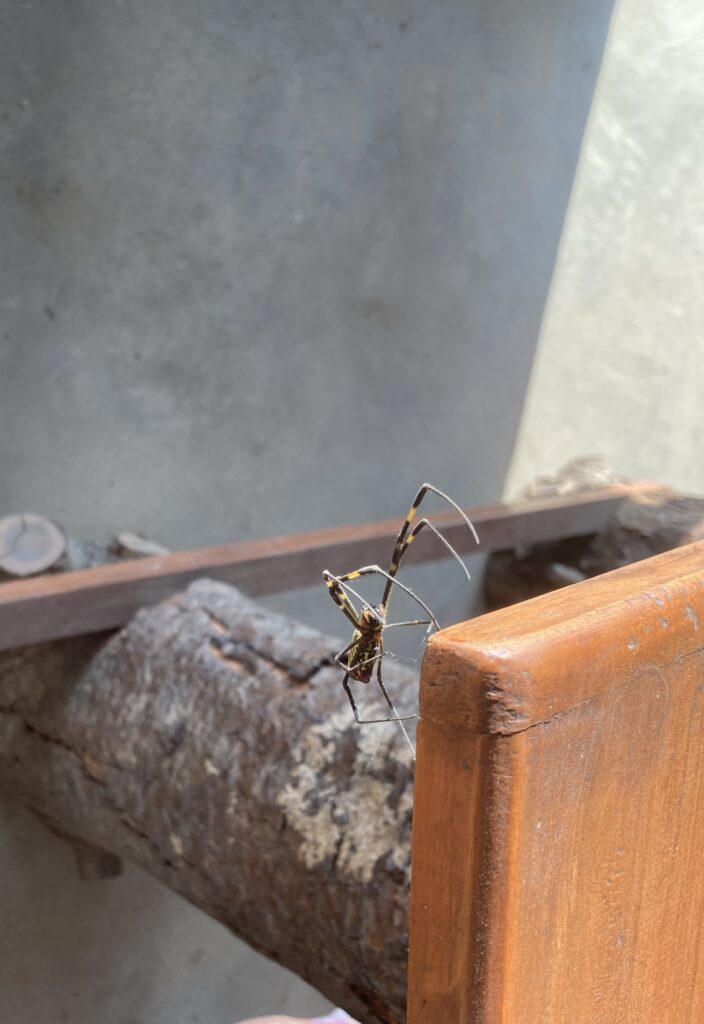‘The Root Garden’ is the first Wayside destination that I’ve visited that attempts the kitschy millennial aesthetic, and I wonder if it doesn’t foreshadow broader changes on the Wayside overall. Those of us who have fallen off the more civilized paths were, nevertheless, still born into the millennial zeitgeist and perhaps we are coming into what will be our fortunes. I started out losing my truck, for instance, and now that I’ve got a camper I’m almost like a homeowner. Maybe I’m hitting my stride.
‘Do you like plants? Do you like the dark? Have you ever wished you could immerse yourself in both simultaneously? If yes, ‘The Root Garden’ may be the place for you. Painstakingly built under an amateur vegetable and flower surface garden, ‘The Root Garden’ exposes those lower parts of the plants we don’t normally see to a dull yellow light that is supposed to be entirely harmless to the plants above. The roots hang from the ceiling of this basement while cottagecore hipsters recite a series of root-facts that are, by all accounts, common knowledge but are seen as contextually important and, worse, poetically significant.
There is a bit of spiritual zeal to these youngsters, one that reeks of maybe-this-is-a-christian-thing-but-they’re-being-low-key-about-it. The employees are friendly and united in their praise of ‘The Root Garden’ as a project. They speak to each other like doting siblings and wear a uniform suitable for the prairie, but unspoiled by its brutality. As a whole, they are said to have a long-standing beef with ‘The Rot Garden,’ only two hours away by car. Historically, they are not willing to speak about this.’
I arrive in the middle of a weekday- not exactly prime time for site-seeing- and I’m not surprised to find I’m the only visitor. What does surprise me, however, is the sheer number of employees available. A woman greets me at the surface-level entrance and invites me to peruse the short history of ‘The Root Garden’ before committing to a ticket. She follows me the entire time and at a distance that suggests we might be friends- that we may have dated briefly but are still on good terms. I turn several times, thinking she’s about to say something or to hold my hand but every time I do, she seems focused on the history.
The man at the register smiles and stares just to the left of us. They both jump when something strikes the glass entry door with a massive splat. I look in time to recognize a rotten cabbage sliding down the glass and to see a truckful of crust punks taking off down the highway and generally flipping off the establishment as though it were an avatar of the man which, even despite my general discomfort, I’d have a hard time believing.
“Was that the rot garden?” I ask and the woman shakes her head.
“I don’t know what you mean.”
There are eight similarly dressed men and women in the actual ‘Root Garden.’ They look like colonial ghosts under the warm Edison lights anchored into the dirt ceiling, and they seem to silently vie for my attention, each an expert on their own segment of the cellar. I learn all the things I already know about roots. Anytime I accidentally brush my head against the plants all eight people react at once, half saying some form of ‘guess they like you’ and the other half politely suggesting I should be more careful. Nobody in the cellar but me is taller than 5’7” I realize. They glide around like ghosts under the plants.
Finally, when the tour seems to be winding down to an end, I’m brought to the ‘edible’ section of the garden, where the likes of onions and potatoes hang from the ceiling. One of the specter women is carefully washing a dangling carrot and I soon find myself surrounded by the others.
“We have a little tradition,” one of the men says, “Where visitors bite a carrot in the ceiling. It’s the freshest vegetable that can be consumed. Life, still growing. Still anchored in the ground.”
My body reacts negatively in a way I’m only just able to keep from surfacing. I search my mind for excuses to not have to eat this raw, albeit clean, carrot in front of eight strangers.
“Won’t it kill the plant?” I ask.
“Yes,” the woman says. “But we’ll use whatever you don’t eat. Even the greens above. There’s no waste here.”
The sentence is pointed- at me, maybe, or at ‘The Rot Garden,’ which seems a much more likely target.
“I, uh… I only eat meat.”
“You eat meat?” The woman frowns. “Exclusively?”
“Yeah,” I say, embarrassed to be associated with a movement I don’t know a lot about. “One of those.”
The woman’s frown twitches back into a smile. She leans in close to one of the men next to her and whispers something, her body indicating a door that hasn’t opened since I’ve been here. I assumed it was a maintenance closet. I lack the imagination to know what it is now.
“Maybe.” The man says, softly. “Can we have a moment to discuss something?”
It takes me a moment to realize he’s talking to me. “Uh, yeah, sure. I’ll go over here to the, uh, fibrous roots.”
“Yes, of course.”
I imagine there is a moment after I leave that the group comes to some decision about myself and the door and, in turning, they see only the puff of dust hanging in the air from my silent but hurried retreat. In reality, I trip on the second step up and make a racket, sliding back down to the dirt floor, and they turn as a unit, having hardly had a moment to say anything to each other, and I acknowledge their acknowledgment only with an embarrassed shrug before scurrying up the stairs and away from ‘The Root Garden’ and all eight of them arrive in time to wave goodbye in the rearview mirror as I drive away.
Maybe there was never any danger, there, but I’ve learned to limit my curiosity where consumption is at play.
-traveler

